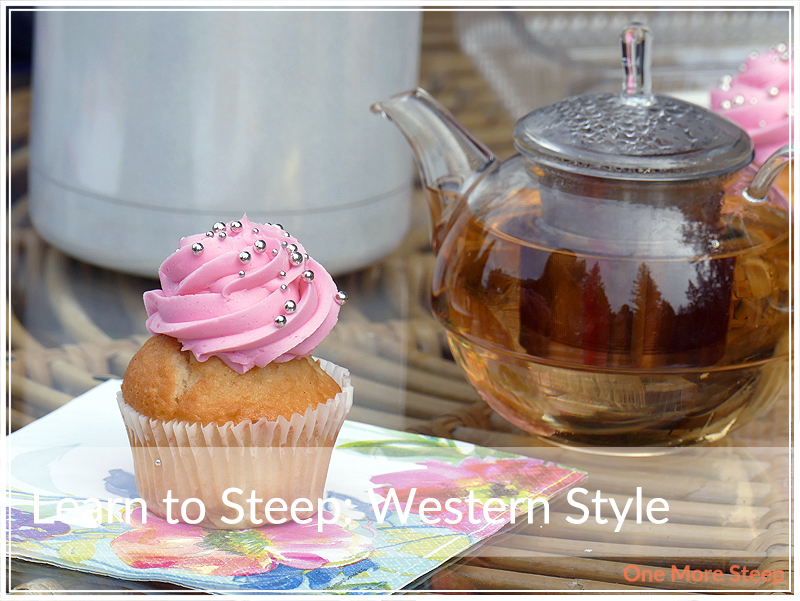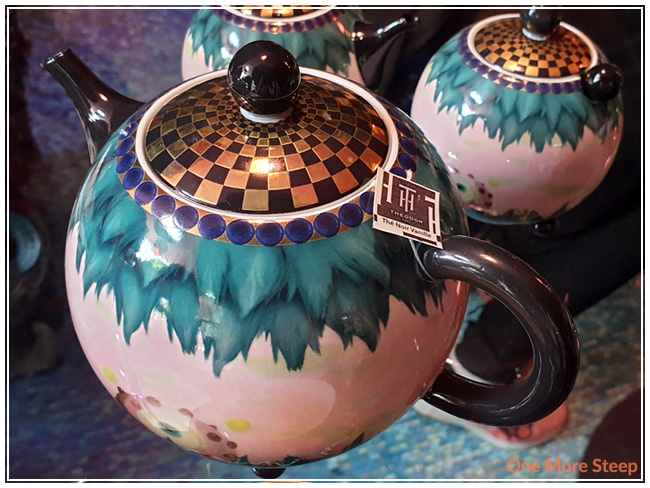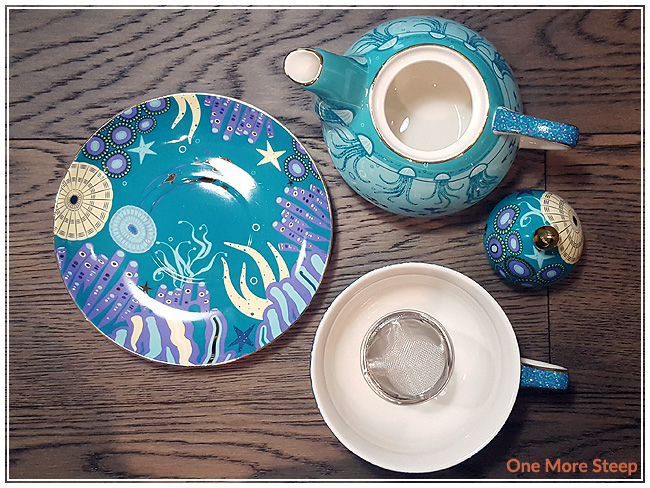
The western style of steeping is one of the better known methods of steeping tea, especially if you grew up drinking tea outside of Asia, but it’s also the steeping method that I’m starting off with in a mini series of steeping methods.

Traditionally, the western style of steeping utilizes a tea pot (or cup), and generally a small amount of tea to large amount of water. Think a tea bag with a mug of hot water, or a teapot with a teaspoon or two of tea into a strainer. In contrast, a tea pot of Chinese or Japanese origin is typically smaller in size, and the method of steeping uses more leaves and less water in comparison to steeping in a western style method.
Teapots that originate from Europe or North America tend to hold much larger volumes of water in comparison to teapots from China or Japan. For instance, some tea pots can hold 2 to 4 cups of water (or more!). There is a wide variation from western style teapots in terms of style, shapes, and designs. These teapots can come with strainers (or not), but you can also use a strainer over your cup of tea to catch errant tea leaves that might escape.

Western style teapots are typically ceramic, porcelain, metal (think silver!), or glass. The cost of a western style tea pot, depending on where you live, may be fairly inexpensive. I’ve seen teapots priced anywhere from $5 to over $50, and I have purchased teapots anywhere from specialty tea shops, thrift stores, and stores that sell home goods. This also holds true from tea cups/mugs – there’s a variety of materials that are used, styles and sizes. I personally like cups that fit well in my hands, and have a wide selection in my personal collection ranging from vintage tea cup and saucers to double walled borosilicate glass. I’m also a fan of ceramic/porcelain, as I find that they retain the heat decently well enough for me to finish the tea.

Using the tea pot is fairly easy. All you need to do is place leaves inside of the tea pot, add the appropriate temperature water, remove the leaves at the appropriate time and pour a cup of tea. some people do an extra step by pouring water into the teapot first and then pour it out, to warm the vessel prior to steeping the tea. If you are choosing the option of steeping directly in a tea cup or mug instead, the leaves are contained in a tea bag or a tea strainer. Tea strainers come in many options as well – from metal baskets or novelty plastic/silicone designs. I like the basket strainers the best because it allows space for the leaves to expand and unfurl, a fact that is particularly important when it comes to steeping compressed teas like oolong or pu’erh.

Teas steeped western style will likely be successfully resteeped a lower number of times compared to teas that are steeped gongfu style, if only because of the length of time the leaves are steeped in its entirety. Western style of tea steeping is one of my preferred styles of steeping, primarily due to the ease of steeping. The majority of steeping instructions for most teas, blends and tisanes that I have come across is for a western style of steeping (typically minutes instead of seconds).

What’s your preferred style for steeping your tea?